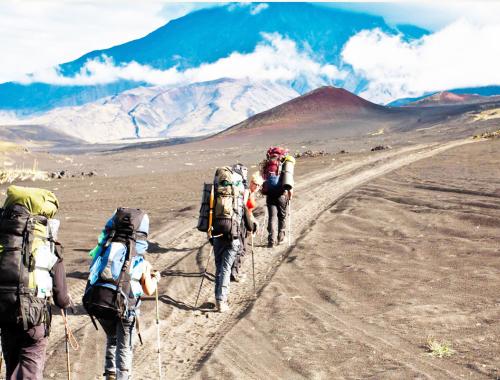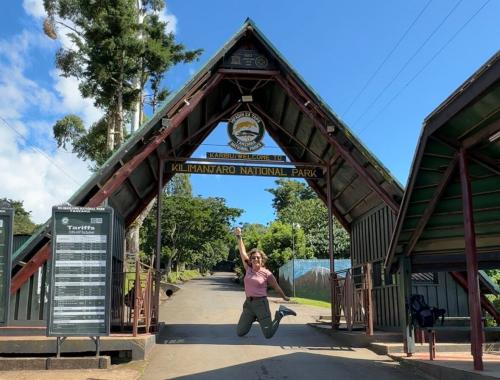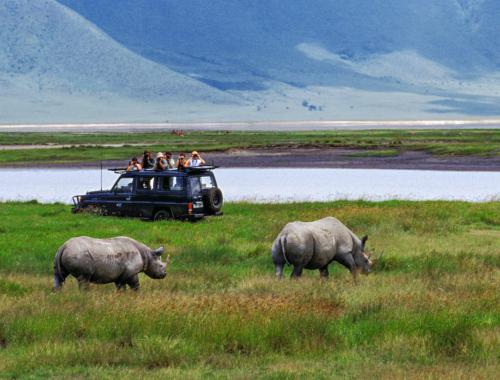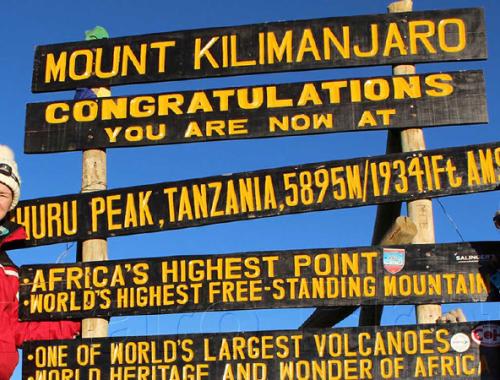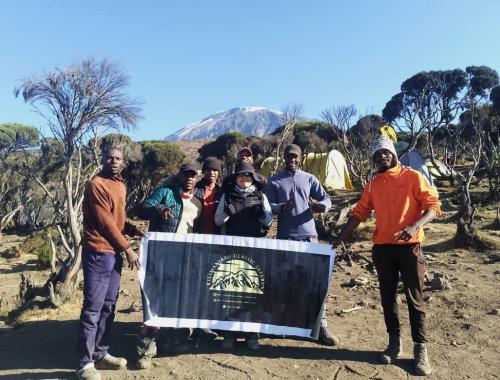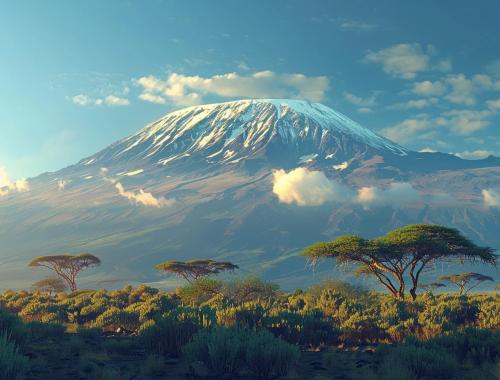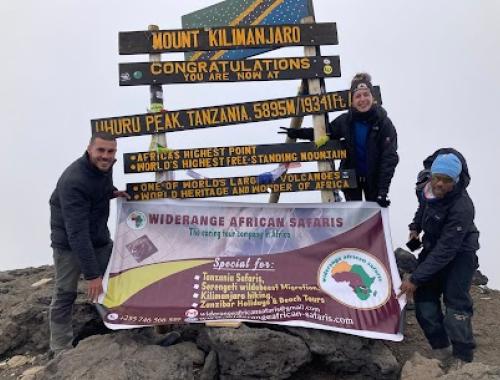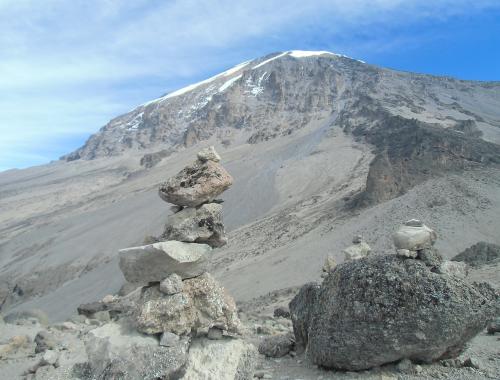Kilimanjaro National Park
Kilimanjaro National Park is a wonderful place in Tanzania, a country in East Africa. It is the home of Mount Kilimanjaro, the highest mountain in Africa. The mountain is very tall—5,895 meters (or 19,341 feet)—and has snow at the top, even though the weather in Tanzania is usually warm.
🏔️ About Mount Kilimanjaro
Even though Tanzania is a warm country, the top of Mount Kilimanjaro is covered with snow and ice. This surprises many people. When you climb the mountain, the weather and the land change as you go higher. It feels like walking from a hot place to a very cold one in just a few days.
🌍 Where is Kilimanjaro National Park?
The park is found in northern Tanzania, close to the border with Kenya. Many tourists fly to the nearby town of Moshi or Arusha to begin their trip. From there, it is easy to reach the park by road.
🧱 The Mountain is a Volcano
Mount Kilimanjaro is not just one mountain — it is made of three volcanic cones:
- Kibo – the highest part, where the snowy peak is
- Mawenzi – a rough and rocky peak beside Kibo
- Shira – the oldest part, now flat like a plateau
These cones were made by volcanic eruptions long ago. The volcano is no longer active, so it is safe to visit and climb.
🚶 Climbing the Mountain
Climbing Mount Kilimanjaro is hard but possible for many people. You do not need ropes or climbing tools — just good walking shoes, a guide, and strong legs and heart. The climb takes about 5 to 9 days, depending on the path you choose.
There are different routes up the mountain. Some are longer and easier, while others are shorter but steeper. Popular routes include:
- Marangu Route (called the "Coca-Cola route") – easier, with huts to sleep in
- Machame Route (called the "Whiskey route") – more beautiful, but more difficult
🏕️ Changing Landscapes
Mount Kilimanjaro is special because it has five different zones as you climb:
- Cultivated zone – small farms and villages at the bottom
- Rainforest zone – green forests full of monkeys and birds
- Moorland zone – open land with short plants and big views
- Alpine desert zone – dry, cold, and rocky with little life
- Arctic summit – freezing cold, with snow and glaciers
Each zone looks different, and the weather changes too — from hot and humid to dry and icy.
🐒 Wildlife in Kilimanjaro National Park
Kilimanjaro National Park has many wild animals, especially in the forest at the bottom of the mountain. The forest is green and full of trees, which gives animals food and a safe place to live.
One of the most common animals you will see is the monkey. There are two types:
Blue monkeys, which are small and playful
Black-and-white colobus monkeys, with long tails and fluffy fur
You can see them jumping in the trees or eating leaves and fruits.
There are also small antelopes, like the duiker, that walk quietly in the forest. They are shy and move fast if they hear people.
Kilimanjaro is also a great place for birds. Some are big, some are small, and many have bright colors. You can hear birds singing in the morning.
You may also see insects, butterflies, and sometimes bush pigs or porcupines in the forest.
As you climb higher, it becomes colder. Fewer animals live up there because there are no trees and little food. At the very top of the mountain, it is too cold for most animals.
Many people visit Kilimanjaro National Park every year. Some people come to climb the mountain, which takes several days. Others come to walk in the forest, see animals, or learn about the local people, like the Chagga tribe, who live near the mountain.
Kilimanjaro is a peaceful place, perfect for people who love adventure, wildlife, hiking, and nature. Even if you do not climb to the top, you can still enjoy the beauty of the area.
🏞️ Things To Do in Kilimanjaro National Park
1. 🏔️ Climb Mount Kilimanjaro – Africa’s Tallest Mountain
Mount Kilimanjaro is the highest mountain in Africa and one of the most famous mountains in the world. Climbing it is a big dream for many travelers.
- You do not need ropes or climbing gear, but the walk is long and hard.
- It takes about 5 to 9 days to climb up and come back down.
- The weather changes as you go higher. You start in a green rainforest, then pass through dry areas, and end in snow and ice at the top.
- The top is called Uhuru Peak, and the view from there is amazing. You can see the clouds below and the sun rising.
🏕️ Why it’s special: You walk from warm forests to freezing snow in just a few days — it’s like walking from the equator to the Arctic!
2. 🌳 Walk in the Rainforest and Watch Monkeys
If you don’t want to climb the mountain, you can still enjoy the lower part of Kilimanjaro.
- The area near the park entrance is covered with thick rainforest.
- You can take a short walk or hike with a guide.
- The rainforest is home to many animals like blue monkeys, colobus monkeys, birds, butterflies, and colorful plants.
- You will also hear birds singing and see big trees covered in moss.
🐒 Why it’s special: It’s peaceful, green, and full of life. Great for people who love nature but don’t want a long climb
3. 🌋 Visit the Shira Plateau – A Quiet High-Altitude Area
The Shira Plateau is a wide, flat area on the mountain at 3,500 meters (11,500 feet).
- It was once a volcano crater, and now it’s a peaceful open land.
- You will see old lava rocks, unusual plants, and maybe some small animals.
- From here, you can see a great view of the top of Mount Kilimanjaro.
- It’s a good place for short hikes, photography, and even camping if you want to stay longer.
📷 Why it’s special: It feels like a secret place on the mountain — high, quiet, and beautiful.
4. ⛺ Camp Under the Stars on the Mountain
If you choose to climb the mountain, you will sleep in tents at different campsites.
- At night, the sky is very clear because there are no city lights.
- You can see thousands of stars, and sometimes even the Milky Way.
- You can hear birds, insects, and the wind. It’s calm and quiet.
- Waking up early gives you a chance to see the sunrise over the clouds.
🌌 Why it’s special: You feel close to nature and the mountain. It’s peaceful, exciting, and something you will always remember.
5. 🌿 Visit Chagga Villages and Learn Local Culture
The Chagga people live on the lower slopes of Kilimanjaro. Visiting their villages gives you a look at real local life.
- You can see how they grow bananas and coffee.
- You can join a coffee tour—you pick the beans, roast them on fire, grind them, and drink fresh coffee.
- See a traditional Chagga house made from mud and grass.
- Try local foods and drinks, like banana beer or sweet bananas cooked with meat or beans.
Some tours include a walk to Materuni Waterfall or Ndoro Waterfall, which are great places for photos.
☕ Why it’s special: You meet local people, learn new things, and enjoy both culture and nature together.
The best time to go is during the dry seasons when the weather is good for walking and climbing:
-
January to mid-March: Warm, clear skies, fewer people
-
June to October: Cool, dry, and most popular time to visit
-
Low areas: Warm and sometimes rainy, around 20–27°C (68–80°F)
-
Middle zones: Cooler and cloudy, about 10–20°C (50–68°F)
-
Top of the mountain: Very cold, below 0°C (32°F), with snow all year
-
Dry seasons: Jan–mid March and June–October (best time to visit)
-
Rainy seasons: March–May and November (wet and slippery)

